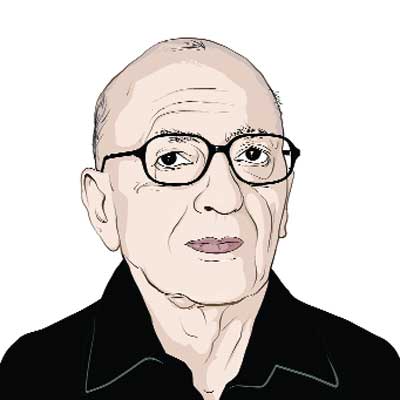Opinion Remains of the day
When India and Pakistan thrashed their issues out in Tashkent
In view of the recent war hysteria largely a creation of Pakistan it would be instructive to look back at what was delicately called the Tashkent Declaration,rather than Agreement. Through it,India and Pakistan ended the state of war after the intense clash 1965. For the first (and so far only) time,the leaders of the two countries,Lal Bahadur Shastri and Field-Marshal Ayub Khan,went outside the subcontinent to arrive at a truce that became possible primarily because of the untiring efforts of then Soviet prime minister,Alexei Kosygin. The Soviet Union is dead and Tashkent is now the capital of Uzbekistan. But the Taskent accord remains a landmark in the subcontinents history. Incidentally,the entire Tashkent drama was played out during the first fortnight of January 1966.
Kosygin had first suggested Shastri-Ayub talks at Tashkent as early as on September 4,1965 when the India-Pakistan war was confined to Kashmir and the Chhamb-Jaurian sector that straddles the international border in Punjab as well as what was then called the Ceasefire Line,since renamed the Line of Control. Both sides had ignored it. The indefatigable Soviet premier repeated his offer on September 18 when the war had spread to Lahore and Sialkot,and,in the words of Sir Morris James,then British high commissioner in Karachi,the Pakistan Army was at the end of its tether and the choice before Ayub was an honourable draw or defeat. Despite protests from his foreign minister Zulfiqar Ali Bhutto,Ayub opted for the UN-sponsored ceasefire operative and decided to accept Kosygins invitation. Shastri had sent his acceptance earlier.
The two leaders arrived at Tashkent,within an hour of each other,on January 3. Marathon three-way meetings began soon thereafter. The Soviet hosts had so arranged that Shastri and Ayub had a villa each to himself,and nearby hotels accommodated their delegations. There was a neutral villa nearby where Shastri and Ayub held their meetings or Kosygin met the two together.
For President Lyndon Johnson of the US this was a highly embarrassing situation. Pakistan was accusing him of betrayal of Americas most allied ally; India of having failed to live up to solemn American pledges that Pakistan would never be allowed to use US-supplied weapons against India. What made LBJ squirm the most was that Kosygin had become the mediator in a region from where America had vowed to keep the Soviet Union out. Yet he had no option but fully to support Kosygins initiative. Johnson was indeed the invisible presence at Tashkent all through the talks.
By the evening of January 9 the talks had almost collapsed because there was no agreement on the issues that were on the top of the two leaders agendas. Shastri wanted the essence of a No-War pact to be incorporated in the document to emerge from Tashkent. Ayub would not hear of it but insisted that the two countries must set up a self-executing machinery to resolve Kashmir. Shastri rejected the idea out of hand.
However,Kosygin,through Herculean efforts,persuaded the two leaders to accept a deftly worded draft that met their minimum aspirations and bypassed their main demands. It was no surprise therefore that the much-vaunted Tashkent spirit evaporated rather fast (as indeed did the subsequent Shimla spirit and Lahore spirit). Agra had generated only acrimony.
Transcripts of conversations between Kosgin and Shastri,between Kosygin and Ayub and between Shastri and Ayub if and when released would fill a tome. However,much of what transpired between the threesome is known. Let me cite only two highlights.
First,Shastri had overcommitted himself to not withdrawing from the Haji Pir Pass that the Indian Army had captured at very high sacrifice with Shastris approval. On hearing this from the Indian Prime Minister,Kosygin was disappointed and depressed. Yet he argued with Shastri in the most courteous and friendly terms. He had obviously done his homework thoroughly because he gave several compelling reasons why the Indian stand on Haji Pir was untenable. The UN Security Council,he pointed out,had unanimously ordered the two sides to withdraw to their positions on August 5 (the date on which Pakistani infiltrations into Kashmir were detected). The Council was keeping the entire issue under review and was ready to take further measures to establish peace. What if it took new measures under the mandatory Part VII of the UN Charter?
Moreover,said the Soviet premier,China was Indias main enemy. During the 1965 war it had made threatening noises but taken no military action because of international pressure. This constraint on China,which had sent India a threatening note even during the Tashkent talks,would vanish if the talks broke down because of Indian refusal to evacuate Haji Pir. And Kosygin gently reminded Shastri that the Soviet Union was a party to the Security Councils resolution and could not endorse any violation of it.
Secondly,when the seemingly endless Ayub-Shastri discussions on Kashmir were deadlocked,the Field-Marshal made one last appeal to the Indian Prime Minister. They were conversing in chaste Urdu. Here is their crucial exchange:
Ayub: Kashmir ke mamle mein kuchh aisa kar deejay ki main bhi apne mulk mein munh dikhane ke qabil rahoon (About Kashmir please make some arrangement so that I may be able to show my face to my country).
Shastri: Sadar Saheb,mein bahut maafi chahata hoon kay iss mamle mein aap ki koi khidmat nahin kar sakta (Mr. President,I apologize profusely because in this matter I cannot be any service to you. (Source: Notes maintained by Shastris confidant C. P. Srivastava.)
Shastri and Ayub signed the Tashkent Declaration at 4 pm on January 10. Great jubilation and heavy drinking followed. Around midnight local time,the triumph at Tashkent was overtaken by the tragedy of Shastris death.
When the news reached the Pakistani delegation the reaction was loud. Roused from sleep,Bhutto testily asked his loyal foreign secretary Aziz Ahmed,What is it Aziz? He replied,Sir,the bastard is dead. Bhutto: Which one?





